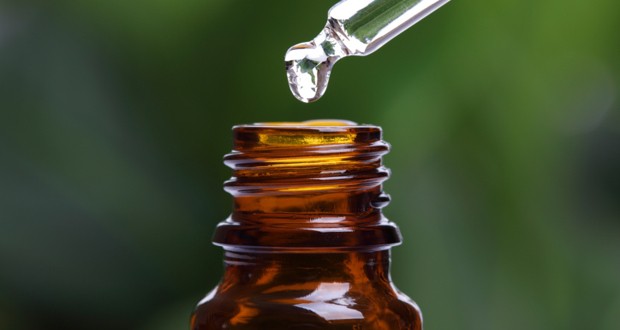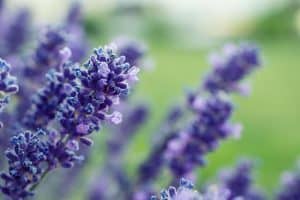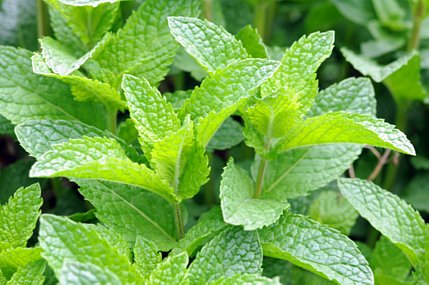The Truth About Mineral Vs. Essential Oil

Perusing the aisles of my favorite local beauty haunt, I would find myself searching high and low for any and all products that read “oil-free”. As a 20-something women whose skin never got the memo that puberty was over a decade ago, my skin seems to enjoy breaking out whenever it feels like it, and starts looking shiny by mid-afternoon if I forget my blotting papers at home. In other words, I am forced to admit that my skin type would be defined as “oily”. Oily hair is something I suffer from, as well. Luckily there are mineral and essential oils to save the day.
Oily skin is not the worst thing. After all, guys and gals of this skin type are less prone to wrinkles as we age, and we don’t have to deal with all of the expensive deep hydrating treatments that our dry-skin counterparts contend with. However, oily skin left unchecked can look unclean and can contribute to further breakouts – and ain’t nobody got time for that! The truth About mineral vs essential oil is that all oils are not created equally – far from it, in fact.
What Does “Oil-Free” Mean, Anyway?

Lavender makes a wonderful essential oil.
I recently made the discovery that products proclaiming to be “oil free” are in fact free of a very specific type of oil – namely, mineral oils. At first, I was horrified by the thought that oil of any shape, texture or variety could still be coming into contact with my skin all this time. Here I’d been working so hard to keep my complexion matte and shine-free, and oils had been sneaking their way into my makeup bag all along? No thanks, Buster.
The more I researched, the more I came to understand the differences between mineral oils (ie, the bad kind) and essential oils (actually good for your skin!). I realized that there is a whole word of oils out there which actually will have a positive effect, even for naturally oily skin.
The Dirty Truth About Mineral Oil

Keep mineral oil far, far away.
Let’s start with mineral oil then, shall we? Mineral oil is the oil we should be avoiding at all costs. This umbrella category can refer to any of a variety of color- and odor- free substances.
The three main classes of mineral oils are aromatic oils, napthenic oils, and alkanes. The name “mineral oil” is in and of itself misleading, since it sounds like something which would be great for your skin. The reality is that just the opposite is true. More often than not, mineral oil is the liquid by-product of refining crude oil to make gasoline and petroleum products.
Yes, you read that right. Definitely NOT something you want anywhere near your precious skin. This same oil which is commonly found in cosmetics and baby lotions is also used as an overlay in IVF petri dishes, livestock vaccines, and thermal fluid in electric components. If that hasn’t convinced you to swear off of mineral oils forever, I don’t know what will.
For decades, mineral oil was used as a popular moisturizer in products for the skin and hair. If you have Vaseline or baby oil in your medicine cabinet, than guess what – you too have mineral oil lurking in your very own bathroom.
While occasional use on small, less sensitive areas isn’t much cause for concern (such as using Vaseline to keep a patch of skin dry while it heals), widespread use of mineral oil as part of your daily facial routine is not a good road to go down.
Toxins In Mineral Oil Explained
Mineral oil is cheap, which is why it is so widely found. But did you also know that it might be contained with toxins? The “technical” grade of mineral oil, used to lubricate equipment and engines, has been demonstrated to be carcinogenic. Even though mineral oil in its more refined, “cosmetic grade” form has been further purified, there is still cause for concern. Whether through air inhalation, food intake, or absorption through the skin, mineral oil is not ideal for the human body.
The Science Behind Essential Oils: Are You Using The Right Ones? https://t.co/nEdW69Sw9b #essentialoil #aromatherapy #spirituality pic.twitter.com/UNRUtHVogy
— Vitamin Discount Ctr (@ForLifeForLess) September 15, 2017
Mineral oil in cosmetics is commonly considered to be a comedogenic substance. For me, the only word dirtier than “oil” when it comes to skin care is “comedogenic,” and if a product isn’t emblazoned with “non-comedogenic,” I avoid it like the plague. Comedogenic ingredients can’t be absorbed by the skin and clog pores with a physical barrier to reduce loss of moisture, but this coating can effectively clog the pores and thereby contribute to acne and blackheads.
If there is already bacteria on your skin, as if often the case, use of mineral oil will keep it close and tight to your skin, which is a recipe for breakouts. At the same time, this mineral oil induced coating blocks other potentially effective therapeutic ingredients from reaching inside the pores. Not a pretty sight for anyone involved.
The skin, as we all know, is actually an organ – the largest of the body, to be exact. In conjunction with the kidneys, it serves to rid the body of toxins. But if your skin can’t “breathe”, it has no way do so. Mineral oil disrupts the body’s natural barriers and development of normal cells.
Why Essential Oils Are Essential

Peppermint naturally helps preserve the skin’s elastin and collagen.
Well, now that you’re ready to swear off of oils forever, step into the world of essential oils for hair and body. If mineral oils are the little devil on your shoulder, then essential oils are on the opposite side, dressed in a little halo. Essential oils are natural, absorbed by the skin, and provide enormous therapeutic value to the body.
They even make a great option for those who practice Oil Pulling! The presence of essential fatty acids (so named because the body cannot produce them naturally and therefore needs to obtain them through external sources) provides healing properties and overall nourishment of the body.
Essential oils have been used for thousands of years, and some of the most popular varieties include lavender oil, peppermint oil, and lemongrass oil. Forget those harmful mineral oils, when there are so many amazing essential oils out there that not only won’t harm your skin, but will actually provide you with wonderful health and cosmetic benefits! Enjoy a breakdown of my top-5.
My Top 5 Essential Oils
Lavender Oil
Lavender oil has been used as a medicinal agent for centuries now and is widely known as being a potent natural antiseptic with antimicrobial, anti-inflammatory and analgesic qualities to name but a few. As far as essential oils go, this is easily one of the most versatile out there and can help to treat almost every ailment and topical skin issue you could think of. It works great as a natural toner and can even be used to help reduce anxiety.
These are both important aspects of treating acne prone skin. It’s also a great natural pain reliever and can work wonders on your hair – helping to balance out oils and reduce inflammation on the scalp i.e. dandruff.
Almond Oil
Almond oil is easily one of my favorite carrier oils due to the fact it blends well with a variety of different essential oils. It is rich in unsaturated fats such as oleic acid which are great for nourishing and moisturizing the skin. The oil is also rich in Vitamin E and contains roughly 60 international units of the stuff. This makes it really great for treating the hair and skin, as well as reducing the amount of toxins found on the surface of the skin as well as in our bloodstreams.
As far as natural essential oils go, almond oil contains the highest amount of vitamin K per dosage that I’ve encountered in essential oils. In fact, many would argue that using a combination of almond oil, eucalyptus oil, and evening primrose oil can treat dry and damaged skin or hair more effectively than most conventional products and keep your hair healthy and nourished at the same time.
Lemon Oil
If you’ve ever had a cold or a sore throat before during a long winter, then you’ll know first-hand how great a warm cup of tea with organic honey and lemon juice can make you feel – almost instantly! This is because lemon essential oil is rich in d-limonene which is a potent natural antiseptic and anti-inflammatory agent that is commonly also found in oranges.
It’s highly effective at reducing the amount of germs and bacteria that occur on the surface of the skin or scalp – which makes it a highly effective natural skin toner and acne treatment. It also helps to reduce the signs of dandruff and scalp inflammation and can help to treat bacterial and fungal infections quickly, effectively and naturally.
It’s great in a variety of DIY recipes, including shampoos, conditioners, moisturizers, toners and facial masks and can even be used to make homemade soap, candles or in a purifier for general air purification.
Tea Tree Oil
Tea tree oil has been used for centuries as a natural antiseptic agent and can really work wonders when it comes to treating minor cuts, wounds, infections, insect bites and is known to be a strong immune booster. It’s especially great for treating hair and skin infections such as lice or other bacterial/fungal infections. I’ve been using tea tree oil for years and have always had positive results with every application.
It has a really potent natural scent that helps to keep pesky insects and mosquitoes at bay and is really great at detoxifying the blood. So if you’re ever feeling flu-ish or rundown or simply want to treat a minor cut or wound, then tea tree oil is the all-round oil for you! It works great as a shampoo-starring ingredient, too 😉
Bergamot Oil
Generally, bergamot oil is used as a fragrance in perfumes, skin lotions and shampoos. Bergamot has a high concentration of linalool and limonene which are essential nutrients for promoting hair growth and nourishing your hair from the roots. Linalool is rich in Vitamin E – which is a key nutrient for regulating and maintaining healthy hair.
The citrus content in bergamot also makes it a strong antimicrobial and antiseptic agent which makes the oil effective in treating any scalp infections or inflammation that might be caused by bacterial growth or germs that might gather on the scalp.
One of the main properties of bergamot that makes it valuable for skin use (and also why it’s added to a large number of skincare products) is that it is a natural cicatrisant. This means that it helps scars and wounds heal quicker, which allows them to disappear sooner.
Conclusion
I hope it’s a bit easier for you to understand why essential oils are generally considered to be a lot healthier and more effective than minerals oils now. Not to mention that they’re safer as well! While we may still be tempted to try them out or use products that contain mineral oils, it’s always a lot better to go directly to the source as they’re a lot healthier for you in general and are simply more effective.
I’ve been using essential oils now for a while and would never dream of going back to conventional personal care products or mild forms of medications. I’d prefer to avoid the risk of contaminating my body with harmful chemical solvents and additives in the hope of making myself healthier – that’s just silly. Right? Well, I hope you’ll agree with me and consider essential oils as a better alternative in future.

